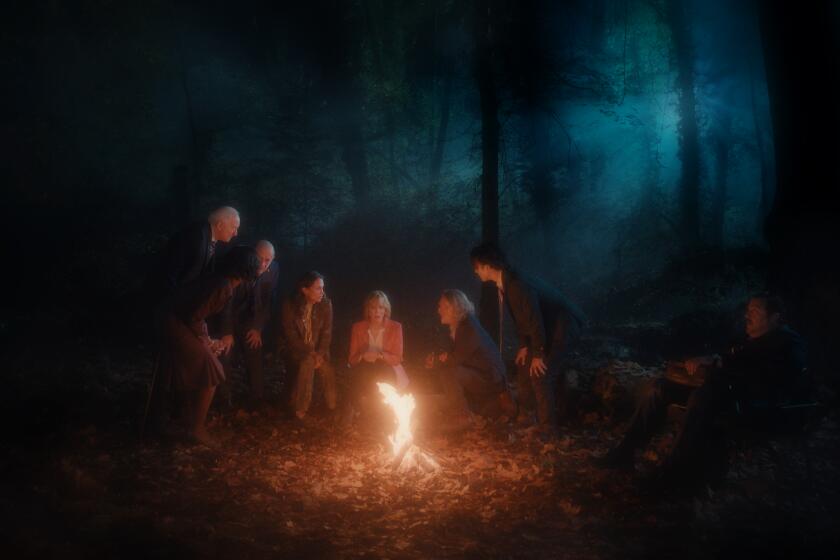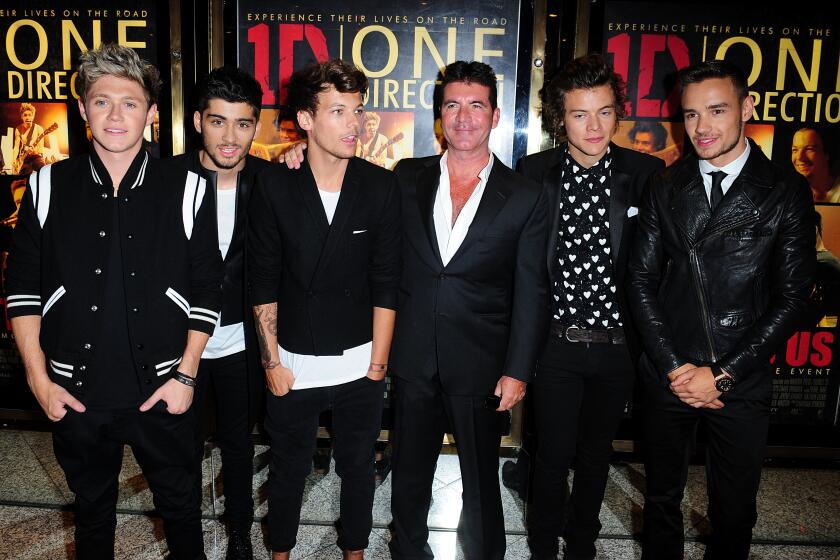‘Captain Power’s’ Future? : Faded Memories of ‘Winky Dink’ and Crayolas of the Past
The recent debut of “Captain Power and the Soldiers of the Future” on KTLA Channel 5 has provoked a storm of protest. While I agree that the TV show is a terrible idea, I doubt there’s much basis for one of the major objections.
“Captain Power” resembles a cross between a regular program and a video game. Through the wizardry of computer chips and light beams, children who have “Captain Power” toys at home can hit on-screen targets--and be “hit” by on-screen characters. Peggy Charren of Action for Children’s Television argues that it makes “second-class viewers” of the kids who can’t afford the $40 toys.
“Captain Power” is neither the first interactive children’s program nor the first kiddie show to integrate a product into the action. “Winky Dink and You” (CBS, 1953-57) beat Mattel to the punch by more than 30 years, and it didn’t produce economic divisions among the viewers.
Ah, such memories.
My two sisters and I used to watch the adventures of Winky Dink, a large-headed little boy with a shock of blond hair that resembled a five-pointed star, on KTOP Channel 9 in Maryland. Whenever Winky and his faithful dog, Woofer, got into a tight spot, they’d call on the audience for help. You were supposed to put something over your TV screen and draw the necessary prop. If they came to a river, they’d ask the kids at home for a bridge; if they were trapped in a cave, they’d ask for a door. At the end of each show, a coded message would appear that you had to trace off the screen to decipher.
The merchandising gimmick was that for 50 cents, you could send away for a plastic sheet to put over your television screen and a box of “magic crayons.” Supposedly, you needed the plastic and the crayons to put in the missing objects and decode the secret messages.
They sold millions of those kits, but none of my friends bought them. We knew that a piece of waxed paper and ordinary Crayolas worked almost as well.
The Winky Dink kits certainly didn’t divide my kindergarten class into the “haves” and “have-nots.” The “magic crayons” carried about as much as cache as a new lunch box. In fact, we at Kensington Elementary regarded a Winky Dink kit as a rather questionable investment. Because you could use waxed paper and regular crayons on “Winky Dink,” you got a better return on your 50 cents if you bought plastic dinosaurs or Three Musketeers bars.
(In those days, a Three Musketeers split into three sections: If you got one in your lunch, you knew you could count on having two loyal friends for the entire noon recess.)
There were ways to get social status from TV, but a Winky Dink kit wasn’t one of them. Getting onto one of the local kiddy shows, like “The Pick Temple Rangers” or “The Adventures of Hoppity Skippity” (the Maryland equivalent of Southern California’s “Engineer Bill”), was almost as good as being a crossing guard. Pick Temple’s show brought not only status but marbles: Every kid got to stick his hand into a bucket of marbles and keep all he could hold in one fist.
Getting on a local kids’ show could improve your social standing, but appearing on “Howdy Doody’s” Peanut Gallery was the grammar school equivalent of a Bel-Air address, a Mercedes with custom plates and Gucci loafers. Forget the “Hymn to Ed Sullivan” in “Bye, Bye, Birdie.” For baby boomers, the only thrill comparable to getting on “Howdy Doody” would be dancing on “American Bandstand” years later.
My friend Arnie is still trading on the status he acquired from a Peanut Gallery appearance more than 30 years ago. A Winky Dink kit, on the other hand, doesn’t cut any ice these days, except in the trendy junk stores of Melrose Avenue. I suspect that “Captain Power” will be similarly forgotten long before it can add to the social divisions in America.
More to Read
The biggest entertainment stories
Get our big stories about Hollywood, film, television, music, arts, culture and more right in your inbox as soon as they publish.
You may occasionally receive promotional content from the Los Angeles Times.










